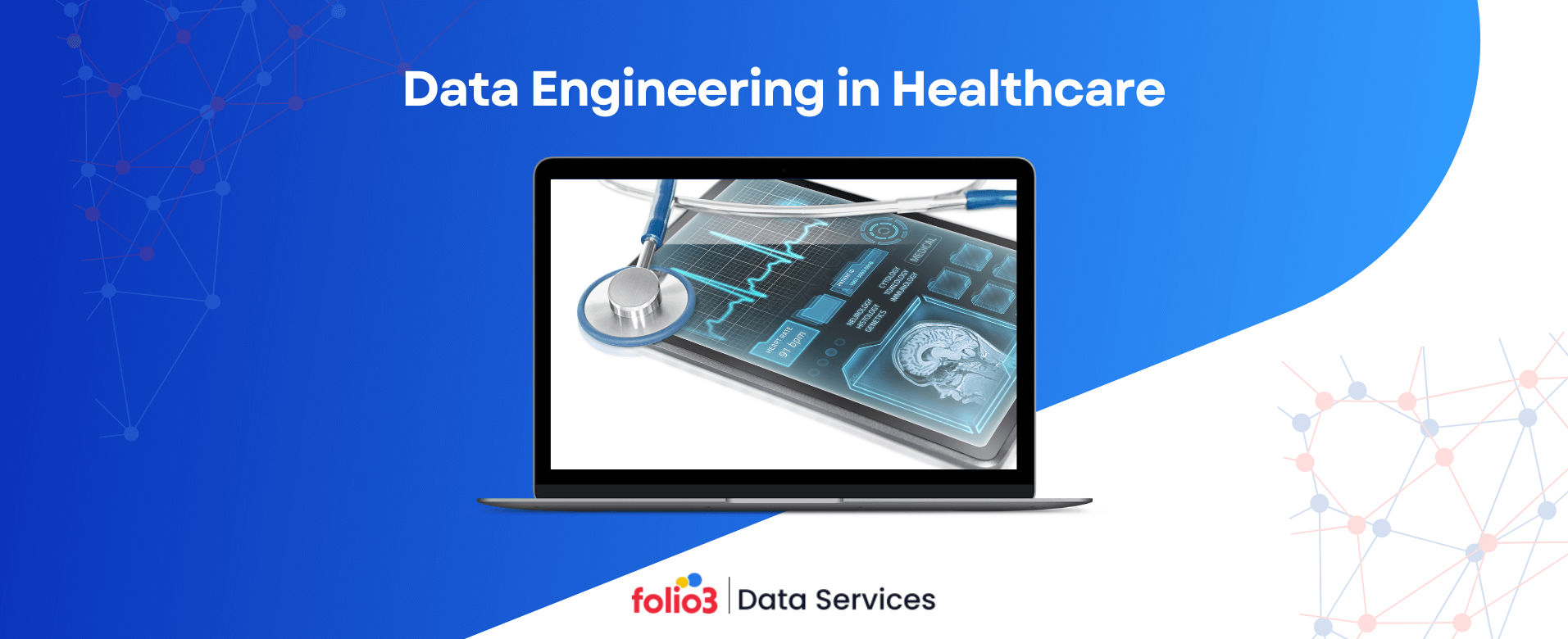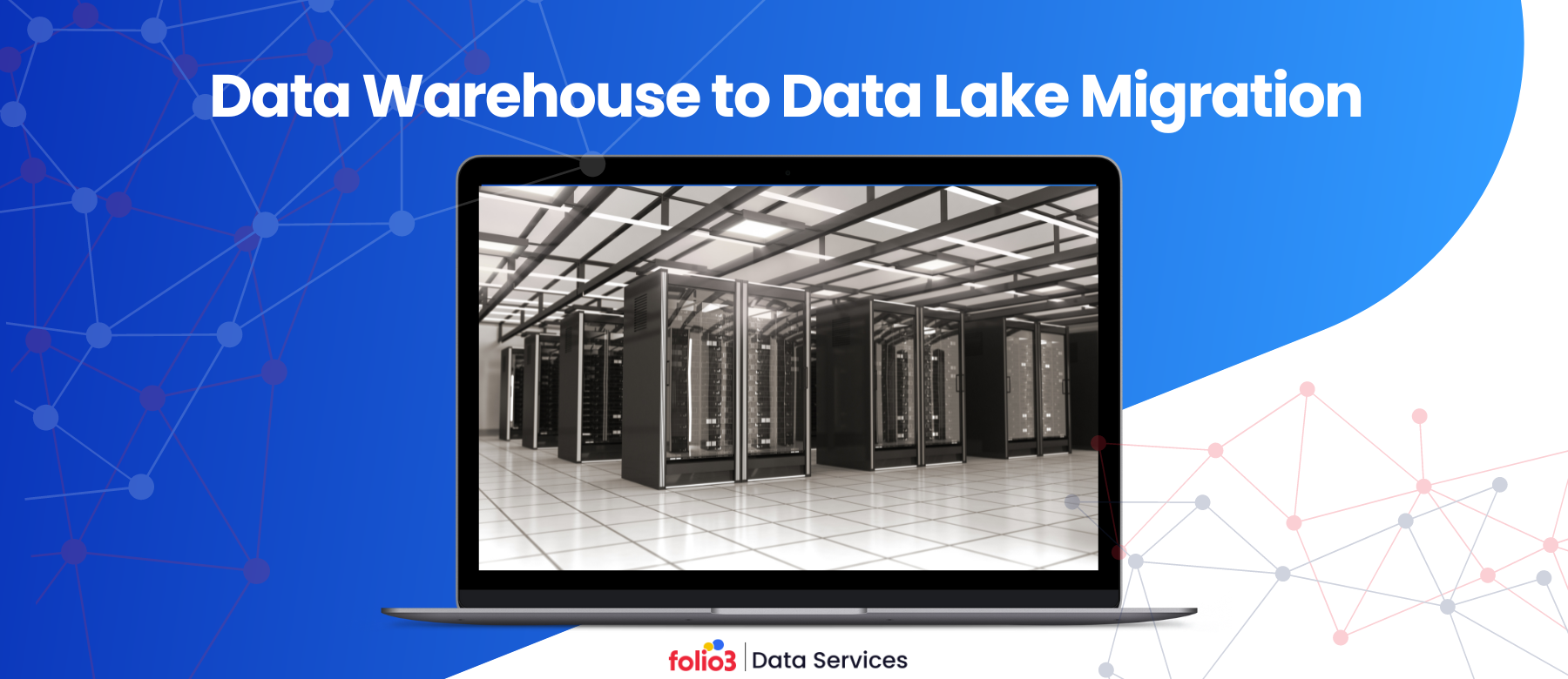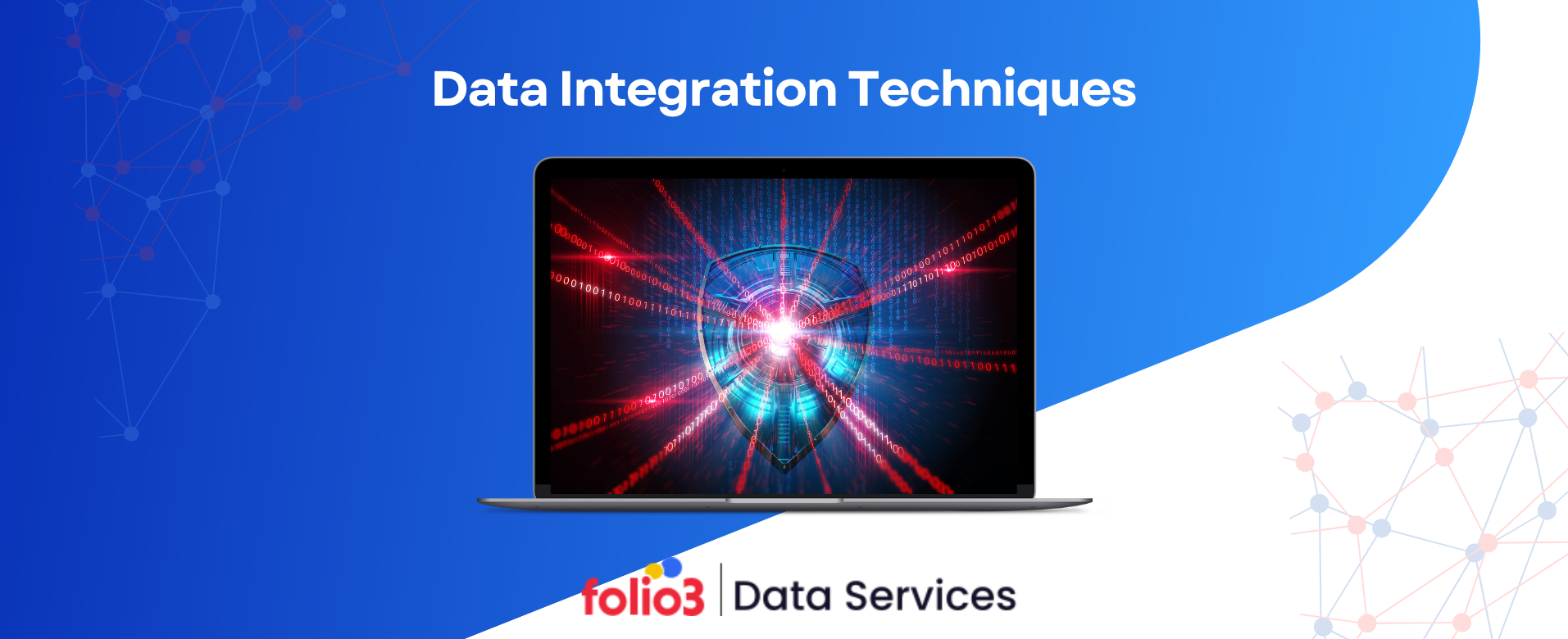Data engineering has emerged as a critical component in the healthcare industry, transforming how patient care is delivered and operational decisions are made. Enabling healthcare organizations to efficiently collect, process, and analyze massive amounts of data, data engineering helps improve patient outcomes, enhance clinical decision-making, and drive innovation in medical research.
Data is transforming the healthcare sector by driving more informed decision-making, improving patient outcomes, and optimizing operational efficiency. Only a few years ago, a staggering 97% of data generated by hospitals remained unused, representing a massive untapped resource.
Today, the industry is dramatically changing, with the majority of healthcare organizations using the wealth of data produced by patients, medical devices, insurance claims, clinical studies, and various other sources. This shift towards data-driven healthcare enables advancements in medical technologies, personalized treatment plans, and preventive care strategies.
Keep reading this blog to understand how data engineering is revolutionizing the industry with data-driven insights.
Overview of Data Engineering in Healthcare
Data engineering services in healthcare involve designing and managing systems for collecting, transforming, and storing healthcare data from various sources, such as electronic medical records (EMRs), medical devices, lab results, and administrative systems.
It is essential for modern healthcare systems, which are increasingly relying on data-driven decision-making to improve the quality of care, operational efficiency, and overall patient experience. The transition to data-driven healthcare is driven by the increasing availability of health data, the need for personalized treatments, and the emphasis on value-based care.
Healthcare providers can use data engineering to develop unified patient records, automate manual processes, and focus on turning data into actionable insights that help in achieving better clinical outcomes.
Benefits of Data Engineering in Healthcare
Data engineering is vital in delivering numerous benefits to healthcare organizations, ranging from patient outcomes to operational efficiencies. Here’s how:
1. Improved Patient Outcomes
Data engineering allows healthcare providers to access real-time data, which can significantly improve patient outcomes.
- Faster and More Accurate Diagnoses: With real-time data analysis, healthcare professionals can quickly access relevant patient information, identify health conditions, and provide timely treatments.
- Personalized Treatment Plans: Data from EMRs, wearable devices, and genetic information can be analyzed to create customized treatment plans for individual patients, improving the effectiveness of medical interventions.
2. Operational Efficiency
Data engineering automates manual tasks, streamlines processes, and helps healthcare organizations optimize operations.
- Automation of Data Processes: Automating tasks like data entry, report generation, and billing reduces administrative workload and errors, allowing healthcare professionals to focus more on patient care.
- Optimized Hospital Operations: Data-driven insights can enable predictive maintenance of medical equipment, capacity planning for emergency rooms, and efficient patient flow management.
3. Enhanced Clinical Decision-Making
Using data engineering, clinicians gain access to data-driven insights that aid in making informed decisions.
- Real-Time Access to Data: With data engineering, clinicians can receive alerts about patient condition changes, ensuring timely interventions.
- Evidence-Based Decision-Making: Data analysis enables clinicians to base their decisions on the latest medical research and patient data, leading to better treatment outcomes.
4. Cost Reduction
Data engineering can help healthcare organizations reduce costs by optimizing processes and minimizing inefficiencies.
- Streamlined Processes: Automating tasks and reducing errors lowers operational costs.
- Early Detection of Conditions: Data-driven monitoring helps detect potential health issues before they escalate, reducing the need for costly treatments.
5. Data-Driven Research and Innovation
Data engineering supports healthcare research by providing access to large datasets, which can be analyzed to discover new treatments and improve existing therapies.
- Accelerating Medical Research: With the ability to process large datasets, researchers can identify patterns and correlations that lead to new medical insights.
- Improving Clinical Trials: Data engineering helps streamline clinical trials by managing patient data more effectively, accelerating the development of new treatments.
6. Better Population Health Management
Data engineering is crucial in tracking disease patterns, improving preventive care, and enhancing public health outcomes.
- Monitoring Disease Outbreaks: Public health officials can identify potential outbreaks and respond quickly by analyzing large datasets from various sources.
- Improving Preventive Care: Data-driven insights help identify at-risk populations and develop targeted intervention programs to prevent the onset of diseases.
Role of Data Engineering in Healthcare
Data engineering is central to the functioning of healthcare data systems. It enables efficient data collection, transformation, and storage, enabling healthcare providers to derive meaningful insights.
1. Data Ingestion from Various Healthcare Sources
Healthcare data comes from diverse sources, including EMRs, medical devices, lab tests, insurance records, and administrative systems. Data engineering facilitates ingesting data from these disparate sources into a central data repository for further analysis.
2. Data Integration for Building Unified Patient Records
Data integration ensures that information from different healthcare systems is combined to create a unified view of each patient’s health history. This is crucial for delivering comprehensive care and understanding a patient’s medical condition’s context.
3. Data Transformation for Analytics and Reporting
Data engineering transforms raw healthcare data into structured formats suitable for analytics and reporting, ensuring clinicians and decision-makers receive relevant and accurate information.
4. Data Storage Optimization (Cloud vs. On-Premise)
Choosing the proper data storage strategy is essential. While cloud storage offers scalability and ease of access, some organizations may opt for on-premise solutions to maintain control over sensitive data.
5. Real-Time Data Processing and Monitoring
Real-time data processing is crucial for critical care situations, such as monitoring ICU patients or surgeries. Data engineering enables the continuous processing of real-time data, alerting clinicians to significant changes in a patient’s condition.
Key Challenges in Healthcare Data Engineering
While data engineering offers substantial benefits, it also presents several challenges:
1. Diversity of Data Sources
Healthcare data originates from various systems, including EMRs, laboratory systems, and medical devices. Ensuring data consistency and quality across these diverse sources can be challenging.
2. Data Privacy and Security
Healthcare data is sensitive and protected under regulations such as HIPAA in the United States. Ensuring data security and compliance while enabling access for legitimate purposes is a significant challenge.
3. Data Interoperability
Healthcare organizations use different systems and formats for storing data, making integrating and exchanging information seamlessly difficult. Data interoperability standards, like HL7 and FHIR, are crucial but still evolving.
4. Handling Large Volumes of Structured and Unstructured Data
Healthcare data consists of structured data (e.g., lab results) and unstructured data (e.g., doctor’s notes). Data engineering must address the challenges of processing, storing, and analyzing this mix of data types.
Applications of Data Engineering in Healthcare
Data engineering serves as the backbone of various applications in healthcare, driving improvements in patient care, clinical processes, and public health management. Here are five key areas where data engineering plays a transformative role:
1. Predictive Analytics
Predictive analytics uses data engineering to analyze both historical and real-time data, enabling healthcare providers to anticipate patient outcomes and intervene proactively.
- Anticipating Complications: Analyzing data from electronic health records (EHRs), lab results, and vital signs, predictive models can forecast potential health issues like sepsis, heart failure, or readmission risks. This allows clinicians to take preventive actions before complications escalate.
- Resource Planning: Predictive analytics can also be used to predict hospital admission rates, helping facilities plan resource allocation, such as staffing, bed availability, and medical supplies.
2. Personalized Medicine
Personalized medicine involves tailoring medical treatments to individual patients based on their unique genetic makeup, lifestyle, and health data. Data engineering facilitates this by collecting and integrating data from various sources.
- Genomics and Pharmacogenomics: Data engineering can incorporate genetic information into a patient’s health record, helping doctors choose the most effective medication or treatment based on genetic variations.
- Lifestyle Data Integration: Wearable devices and health apps provide data about a patient’s activity levels, sleep patterns, and other lifestyle factors. Integrating this data enables doctors to design personalized lifestyle interventions and medication plans.
3. Clinical Decision Support
Clinical decision support systems (CDSS) provide real-time data insights and evidence-based recommendations to physicians during patient care.
- Real-Time Alerts: Continuously monitoring patient data, data engineering can trigger alerts when certain parameters (e.g., blood pressure, heart rate, or oxygen levels) exceed normal ranges. This helps clinicians respond quickly to critical changes in a patient’s condition.
- Data-Driven Recommendations: CDSS can analyze data from thousands of cases and clinical studies to recommend potential diagnoses or treatment options based on current patient symptoms, helping doctors make informed decisions.
4. Healthcare Operations Optimization
Data engineering plays a significant role in improving the efficiency and productivity of healthcare organizations by streamlining operations.
- Automation of Manual Processes: Tasks such as patient scheduling, billing, and data entry can be automated, reducing administrative burdens and allowing staff to focus on patient care.
- Predictive Maintenance of Medical Equipment: Data engineering enables predictive maintenance by analyzing usage data and wear-and-tear indicators. This minimizes downtime for critical equipment and ensures operational continuity.
5. Public Health Data Surveillance
Public health organizations can use data engineering to monitor and analyze data from various sources, enabling timely responses to health trends and outbreaks.
- Disease Outbreak Detection: Aggregating data from hospitals, laboratories, social media, and other sources, data engineering helps identify unusual patterns, such as an increase in flu-like symptoms in a specific area, which could indicate an outbreak.
- Monitoring Health Trends: Continuous data analysis helps track the prevalence of chronic conditions, such as diabetes and hypertension, enabling healthcare authorities to implement preventive programs targeting at-risk populations.
Data Engineering Tools, Technologies, and Consulting in Healthcare
Data engineering in healthcare relies on a range of specialized tools and technologies that streamline data processing, integration, and analysis. Here are some key platforms and tools that support these activities:
ETL/ELT Platforms
Tools for extracting, transforming, and loading (ETL/ELT) data are essential in healthcare for managing large datasets from various sources:
- Apache Nifi: Facilitates data flow automation and data movement between systems, making it ideal for healthcare data integration.
- Talend: Provides a comprehensive suite of tools for data integration and quality management, supporting seamless data transformation and loading for analytics.
Cloud Platforms
Cloud technologies offer scalable solutions for data storage and analytics, enabling healthcare organizations to handle growing data volumes:
- AWS HealthLake: A service that allows healthcare providers to store, transform, and analyze medical data on the cloud, ensuring compliance with healthcare standards like HIPAA.
- Azure Healthcare API: Offers a cloud-based platform for integrating clinical and non-clinical health data, making it easier to build data-driven healthcare applications.
- Snowflake: A cloud data platform that supports secure data sharing and enables complex analytics, particularly useful for combining clinical data with other datasets.
Database Systems
Databases are used for storing and managing patient records, lab results, imaging data, and other structured or unstructured information:
- MongoDB: A NoSQL database that provides flexibility for storing unstructured health data, such as medical notes and imaging data.
- Postgres: A relational database that supports complex queries, ideal for structured data storage like electronic health records (EHRs).
- HL7: Although not a traditional database, HL7 is a set of standards for transferring clinical and administrative data between software applications used by various healthcare providers, ensuring interoperability.
Data Pipelines and Orchestration Tools
These tools help automate the data pipeline processes, ensuring that data is processed and made available in real-time for analytics:
- Apache Airflow: An open-source workflow orchestration tool that automates and manages data pipelines, making it easier to integrate different data sources.
- dbt (data build tool): A transformation tool that simplifies data modeling and analytics by enabling efficient data transformations and preparation.
Final Words
Data engineering is transforming the healthcare industry by enabling efficient data management, real-time analytics, and personalized patient care. It empowers healthcare organizations to make data-driven decisions that improve patient outcomes, optimize operational efficiency, and drive medical innovation.
As technology continues to advance, data engineering will play an increasingly vital role in shaping the future of healthcare. To stay ahead, healthcare organizations need reliable partners to guide them through the complexities of data management and cloud solutions.
Explore Folio3’s Cloud and Data Services to optimize your data infrastructure, implement scalable cloud solutions, and use advanced analytics for better healthcare outcomes. Our expertise in cloud platforms, data engineering, and healthcare consulting ensures that your organization is equipped for a data-driven future.
Let Folio3 help you use the power of data engineering to transform your healthcare operations and deliver exceptional patient care!





